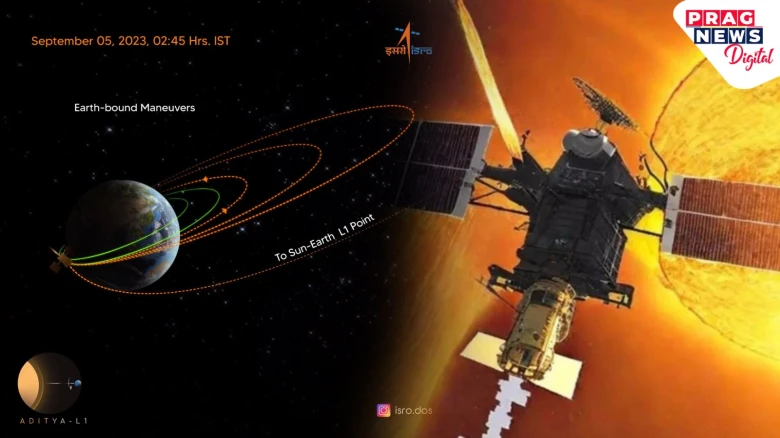The next maneuver is planned for September 10 at 2:30 am...
Digital Desk: The Indian Space Research Organization (Isro) said early on Tuesday that Aditya L1, the nation's first solar mission, has completed the second Earth-bound manoeuvre successfully.
The operation was carried out by the Telemetry, Tracking and Command Network (ISTRAC) of the space agency.
Isro shared the update on X, "The second Earth-bound manoeuvre (EBN#2) is performed successfully from ISTRAC, Bengaluru. ISTRAC/Isro's ground stations at Mauritius, Bengaluru and Port Blair tracked the satellite during this operation. The new orbit attained is 282 kilometres x 40,225 km."
According to ISRO, the next maneuver is planned for September 10 at 2:30 am.
The first Earth-bound manoeuvre of Aditya L1 was accomplished on September 3.
Before entering the transfer orbit toward the Lagrange point L1 of the Sun-Earth system, which is around 1.5 million kilometres from the Earth, the spacecraft will do two additional earthbound orbital movements. This location is perfect for solar observation because it offers an uninterrupted and clear view of the Sun.
After around 127 days, Aditya L1 is expected to reach the intended orbit at the L1 point.
On September 2, Aditya L1 was launched from Sriharikota's Satish Dhawan Space Center. The spacecraft, weighing 1,472 kg, was carried into space by the Polar Satellite Launch Vehicle (PSLV) in 'XL' configuration which is ISRO's most reliable and versatile workhorse rocket.
Studying the Sun's higher atmospheric layers, specifically the chromosphere and corona, is the main goal of the Aditya L1 mission.
Additionally, the mission will look at coronal mass ejections (CMEs), which are significant discharges of plasma and magnetic fields from the Sun's corona, and analyze the corona's magnetic field, which controls space weather.
Seven payloads are carried by Aditya L1, including the Solar Ultraviolet Imaging Telescope (SUIT), the Visible Emission Line Coronagraph (VLEC), the High Energy L1 Orbiting X-ray Spectrometer (HEL1OS), the Solar Low Energy X-ray Spectrometer (SoLEXS), and the High Energy L1 Orbiting X-ray Spectrometer (HEL1OS), which analyze X-ray flares.

Leave A Comment